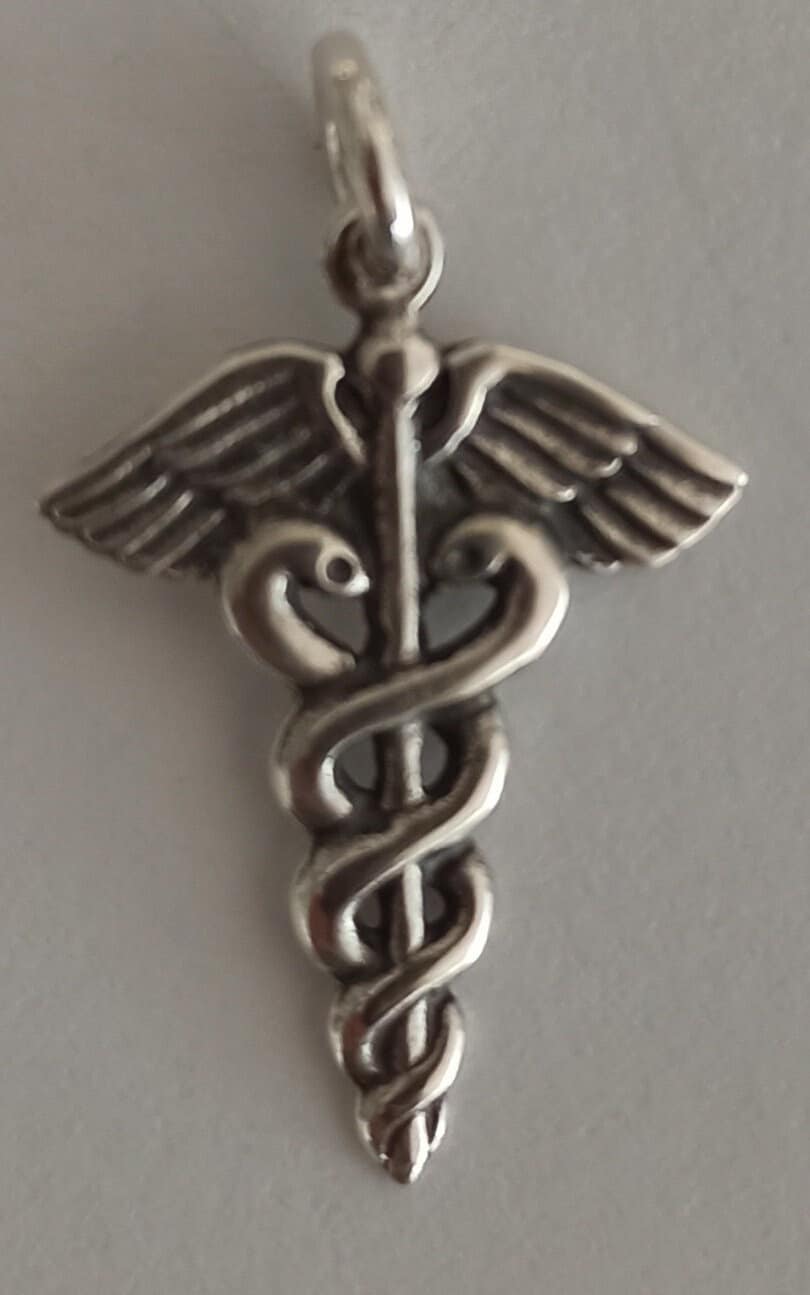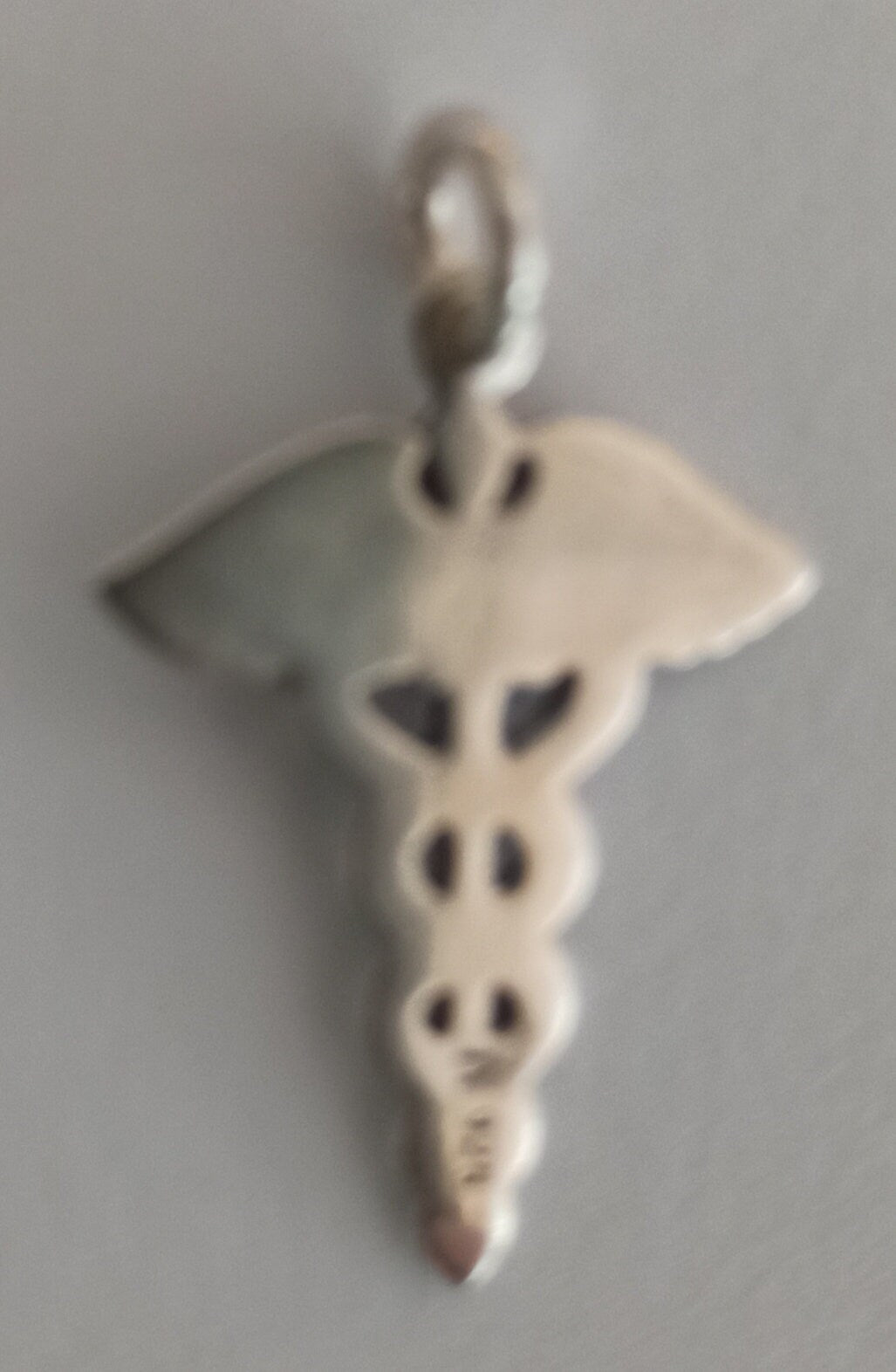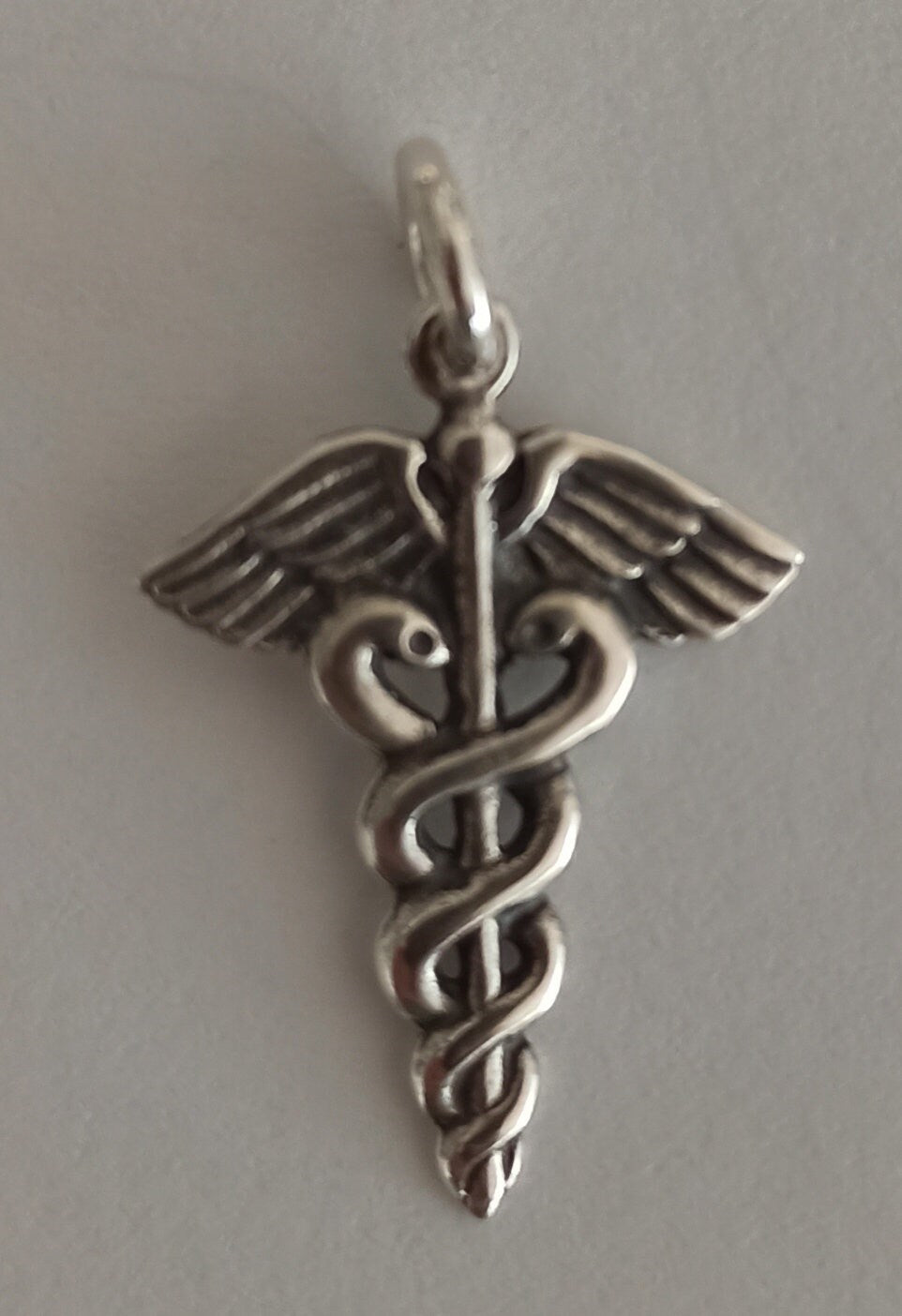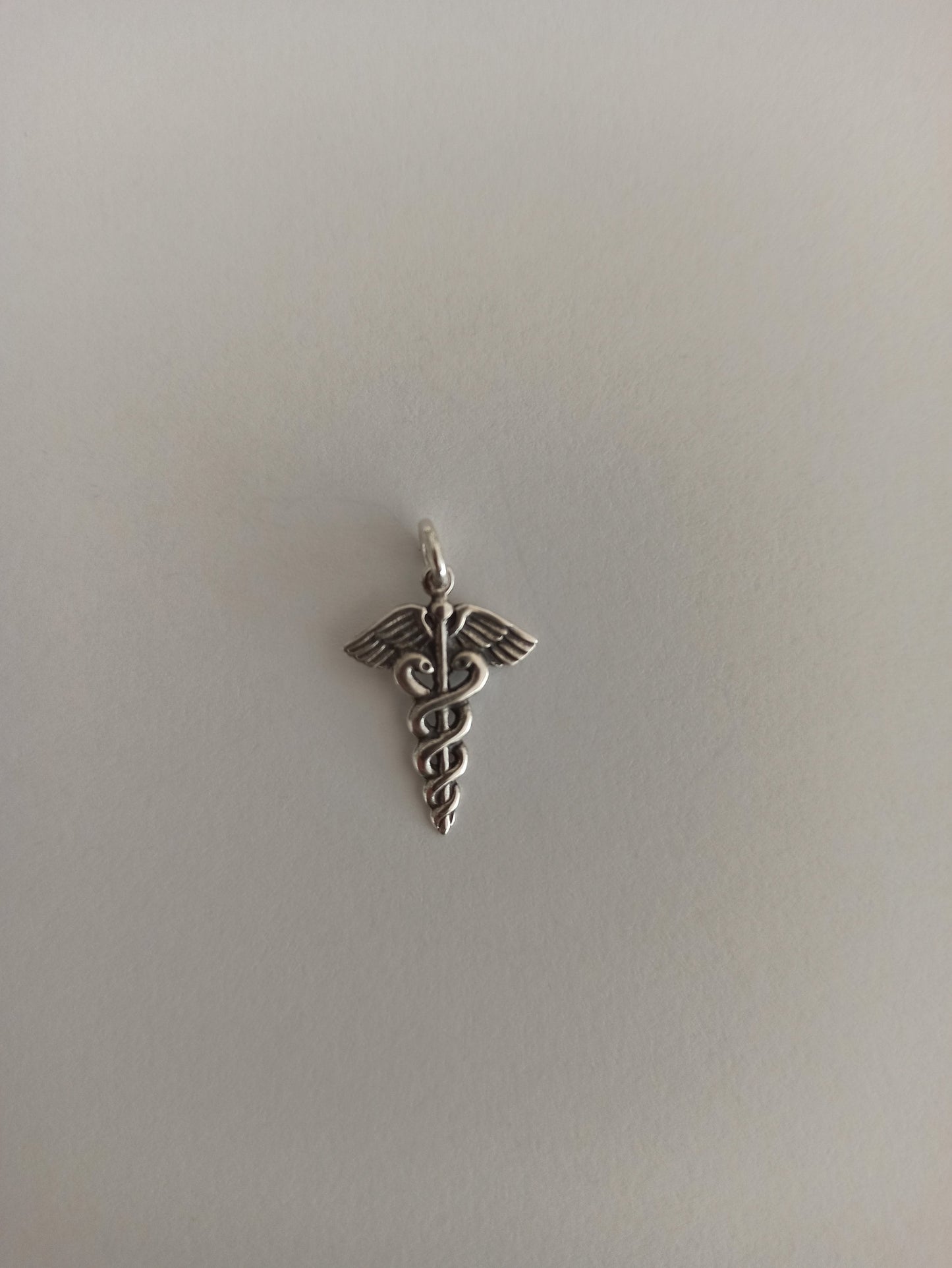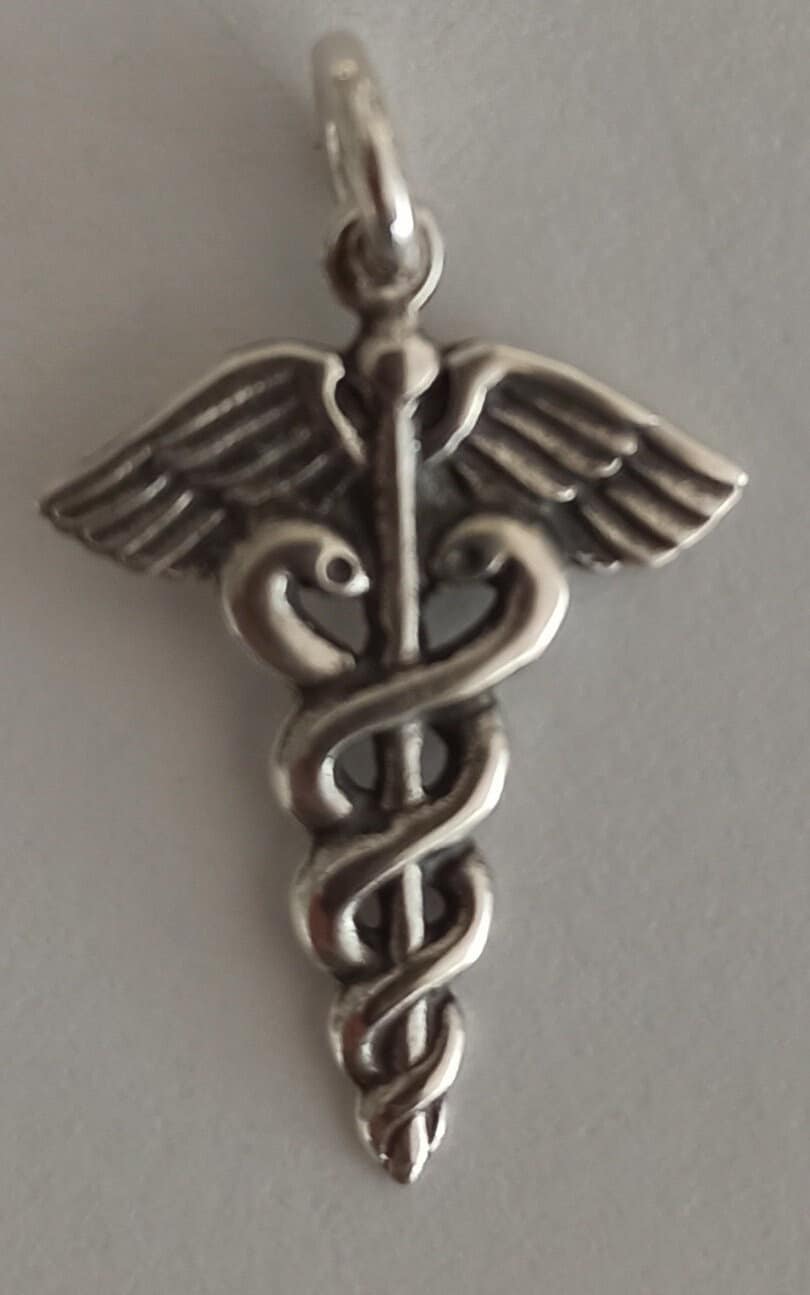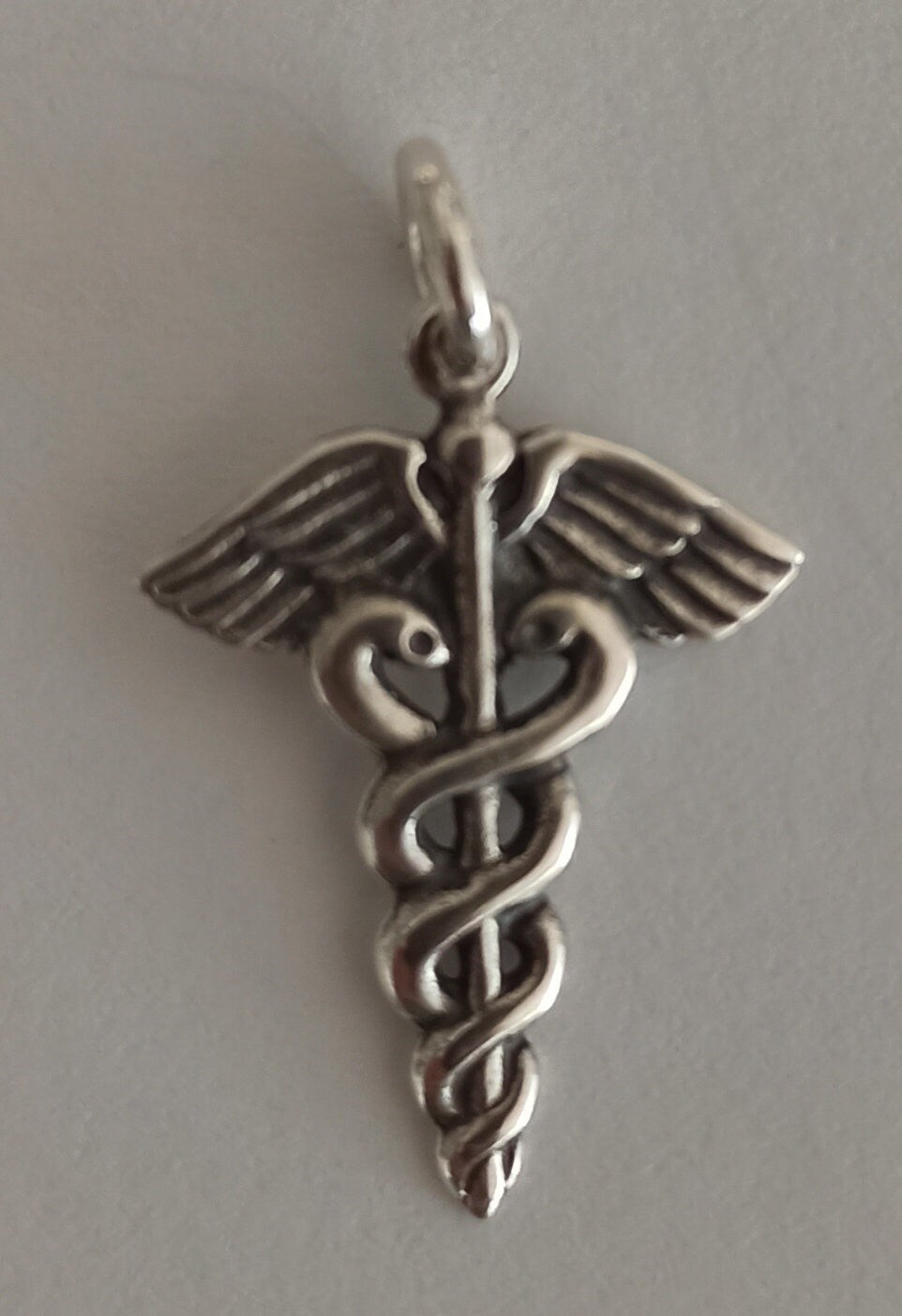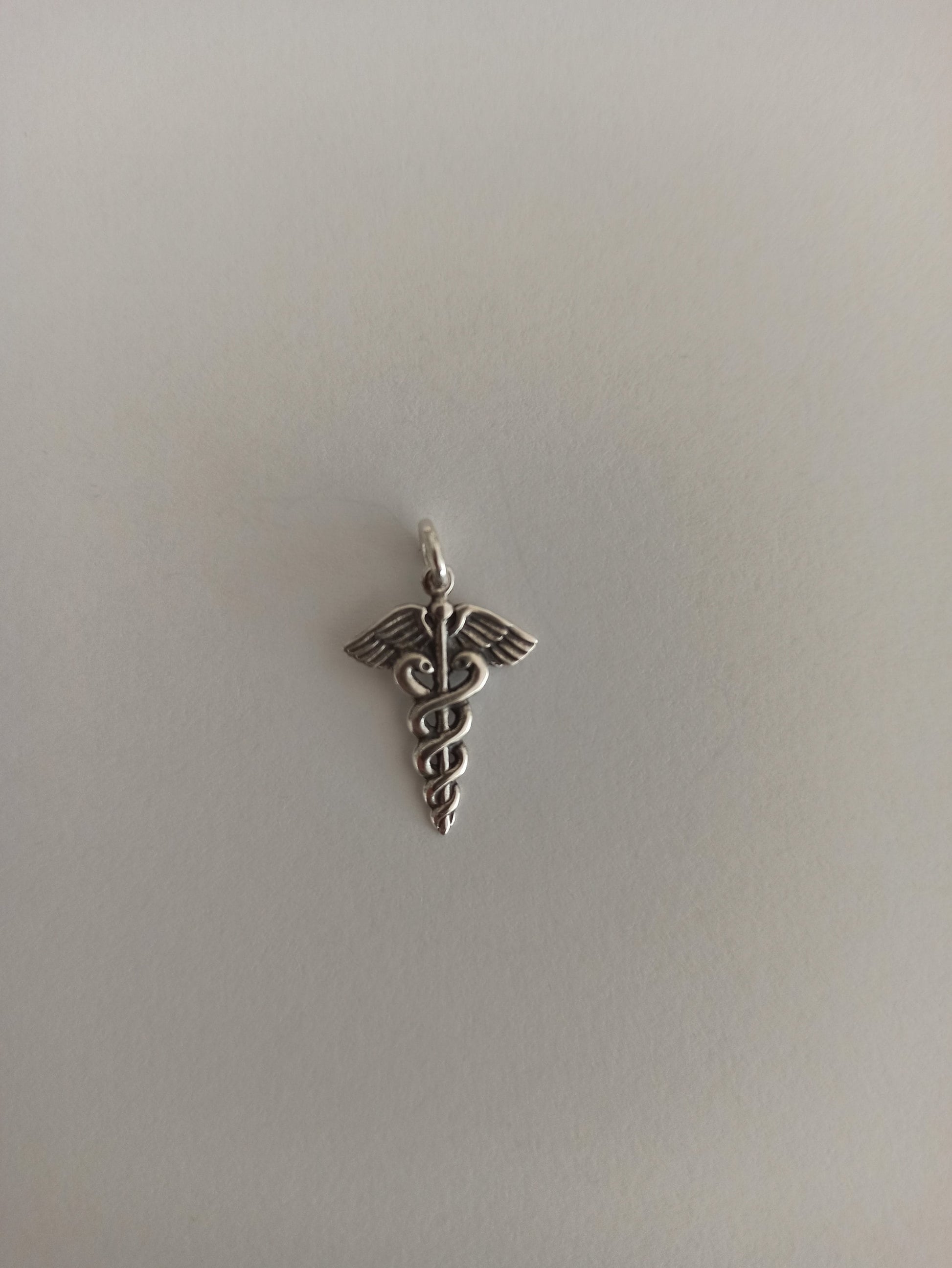Gallery Demeter
Caduceus - Symbol of God Hermes Mercury - Short Staff entwined by two Serpents, surmounted by Wings - Pendant - 925 Sterling Silver
Caduceus - Symbol of God Hermes Mercury - Short Staff entwined by two Serpents, surmounted by Wings - Pendant - 925 Sterling Silver
Regular price
€24,90 EUR
Regular price
Sale price
€24,90 EUR
Unit price
per
Tax included.
Shipping calculated at checkout.
Couldn't load pickup availability
Item Specifics
Details:
Condition: New
Material: Sterling Silver 925
Height: 2 cm - 0,8 inches
Width: 1,5cm - 0,6 inches
Weight: 1 g
The caduceus is the staff carried by Hermes in Greek mythology and consequently by Hermes Trismegistus in Greco-Egyptian mythology. The same staff was also borne by heralds in general, for example by Iris, the messenger of Hera. It is a short staff entwined by two serpents, sometimes surmounted by wings. In Roman iconography, it was often depicted being carried in the left hand of Mercury, the messenger of the gods.
As a symbolic object, it represents Hermes (or the Roman Mercury), and by extension trades, occupations, or undertakings associated with the god. In later Antiquity, the caduceus provided the basis for the astrological symbol representing the planet Mercury. Thus, through its use in astrology, alchemy, and astronomy it has come to denote the planet and elemental metal of the same name. It is said the wand would wake the sleeping and send the awake to sleep. If applied to the dying, their death was gentle; if applied to the dead, they returned to life.
By extension of its association with Mercury and Hermes, the caduceus is also a recognized symbol of commerce and negotiation, two realms in which balanced exchange and reciprocity are recognized as ideals. This association is ancient, and consistent from the Classical period to modern times. The caduceus is also used as a symbol representing printing, again by extension of the attributes of Mercury (in this case associated with writing and eloquence).
The caduceus is often used as a symbol of healthcare organizations and medical practice, particularly in the United States of America.
It has been argued that the staff or wand entwined by two snakes was itself representing a god in the pre-anthropomorphic era. Like the herm or priapus, it would thus be a predecessor of the anthropomorphic Hermes of the classical era.
The Homeric hymn to Hermes relates how his half brother Apollo got enchanted by Hermes's music from his lyre fashioned from a tortoise shell, which Hermes kindly gave to him. Apollo in return gave Hermes the caduceus as a gesture of friendship.The association with the serpent thus connects Hermes to Apollo, as later the serpent was associated with Asclepius, the "son of Apollo".
The association of Apollo with the serpent is a continuation of the older Indo-European dragon-slayer motif. Wilhelm Heinrich Roscher (1913) pointed out that the serpent as an attribute of both Hermes and Asclepius is a variant of the "pre-historic semi-chthonic serpent hero known at Delphi as Python", who in classical mythology is slain by Apollo.
One Greek myth of origin of the caduceus is part of the story of Tiresias, who found two snakes copulating and killed the female with his staff. Tiresias was immediately turned into a woman, and so remained until he was able to repeat the act with the male snake seven years later. This staff later came into the possession of the god Hermes, along with its transformative powers.
Another myth suggests that Hermes (or Mercury) saw two serpents entwined in mortal combat. Separating them with his wand he brought about peace between them, and as a result the wand with two serpents came to be seen as a sign of peace.
In Rome, Livy refers to the caduceator who negotiated peace arrangements under the diplomatic protection of the caduceus he carried.
The Customs Service of the former German Democratic Republic employed the caduceus, bringing its implied associations with thresholds, translators, and commerce, in the service medals they issued their staff. The caduceus is also the symbol of the Customs Agency of Bulgaria and of the Financial Administration of the Slovak Republic(Tax and Customs administration). The emblems of the Belarus Customs[ and the China Customs are a caduceus crossing with a golden key. The emblem of the Federal Customs Service of Russia has a caduceus crossing with a torch on the shield. The coat of arms of Kyiv National University of Trade and Economics of Ukraine has two crossed torches surmounted by a caduceus on the shield.
